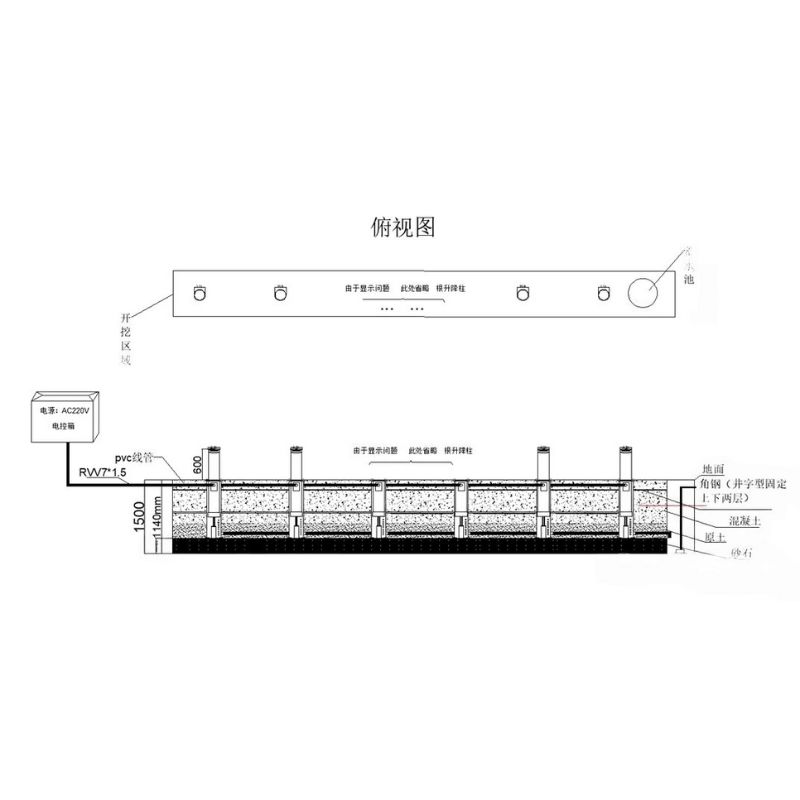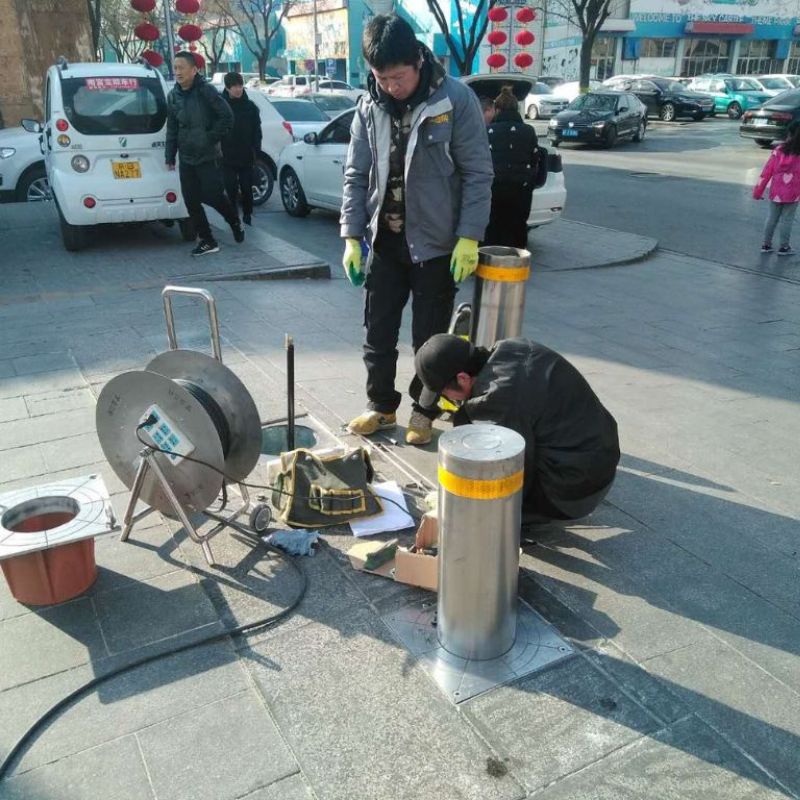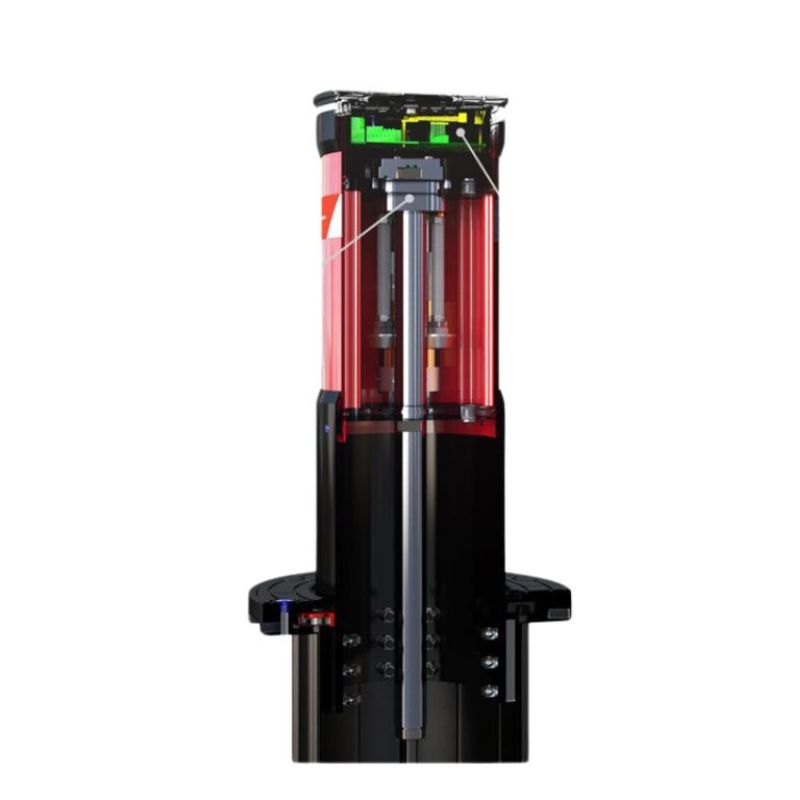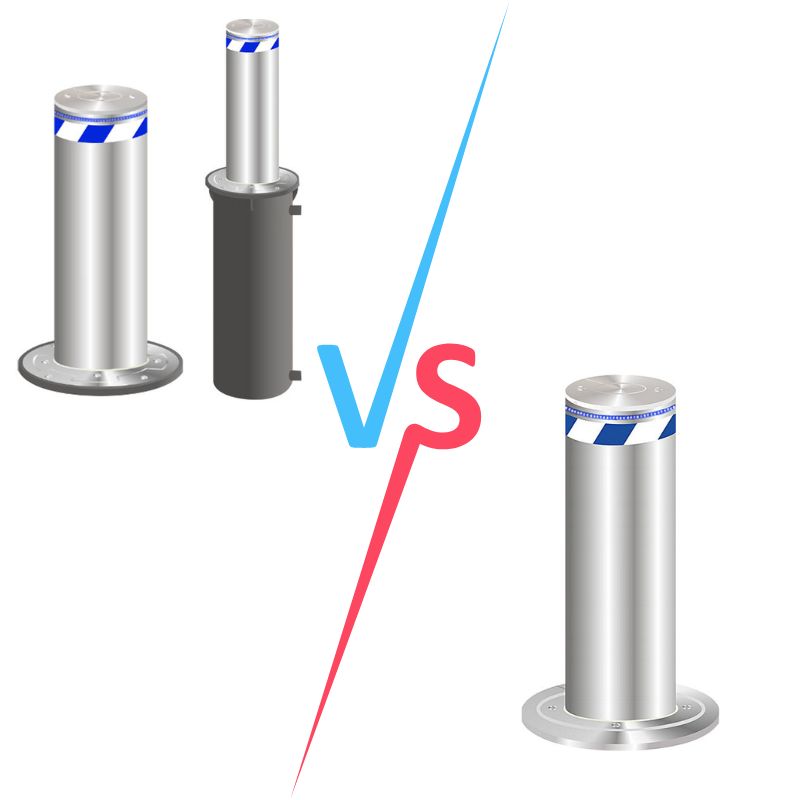How to Troubleshoot Automatic Bollard Failures
Common Failures and Solutions for Automatic Bollards
Automatic bollard faults typically fall into two categories: mechanical failures and electrical failures. Whether mechanical or electrical, timely inspection and maintenance can effectively extend the bollard’s service life and ensure its safe and stable operation.
Mechanical Failures
Mechanical faults are among the most common issues during the use of automatic bollards. Below are some typical mechanical failures and their solutions:
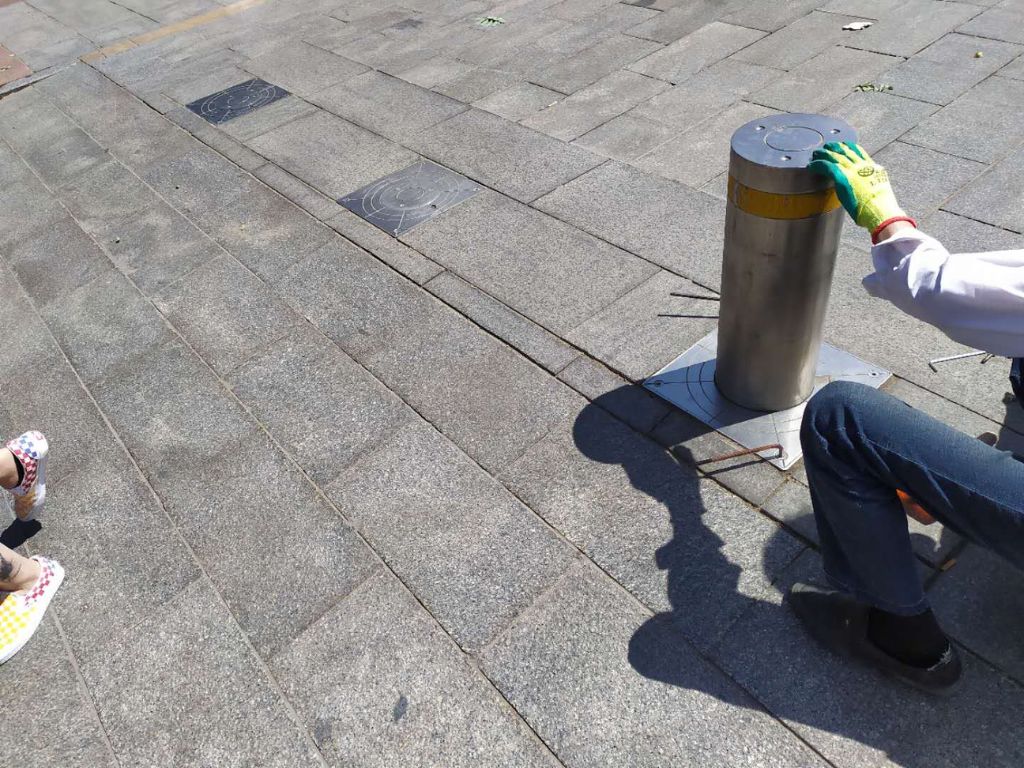
Stiff Movement of Automatic Bollard
Cause: The automatic bollard may have difficulty moving up and down due to poor lubrication between the bollard and its support tower or external obstructions around the bollard.
Solution:
-
Regularly inspect and maintain the lubrication points of the bollard to ensure sufficient lubrication and cleanliness.
-
Clear any obstacles around the bollard to allow free movement.
Automatic Bollard Fails to Rise or Lower
Cause: This issue may be caused by a malfunctioning motor, a faulty limit switch, or poor electrical connections.
Solution:
-
Check if the motor is working properly; if necessary, repair or replace it.
-
Inspect the limit switch for damage and ensure secure wiring to avoid connection issues.
Automatic Bollard Gets Stuck
Cause: The bollard may get stuck due to component wear, debris accumulation, or unstable air pressure.
Solution:
-
Perform a thorough inspection of all bollard components and remove any potential blockages.
-
Check the air pressure system to ensure it is functioning correctly and prevent issues caused by pressure irregularities.
Electrical Failures
Electrical faults often involve the bollard's electrical components or wiring. Common electrical issues include motor failure, control system malfunction, and lighting problems. Below are solutions to these issues:
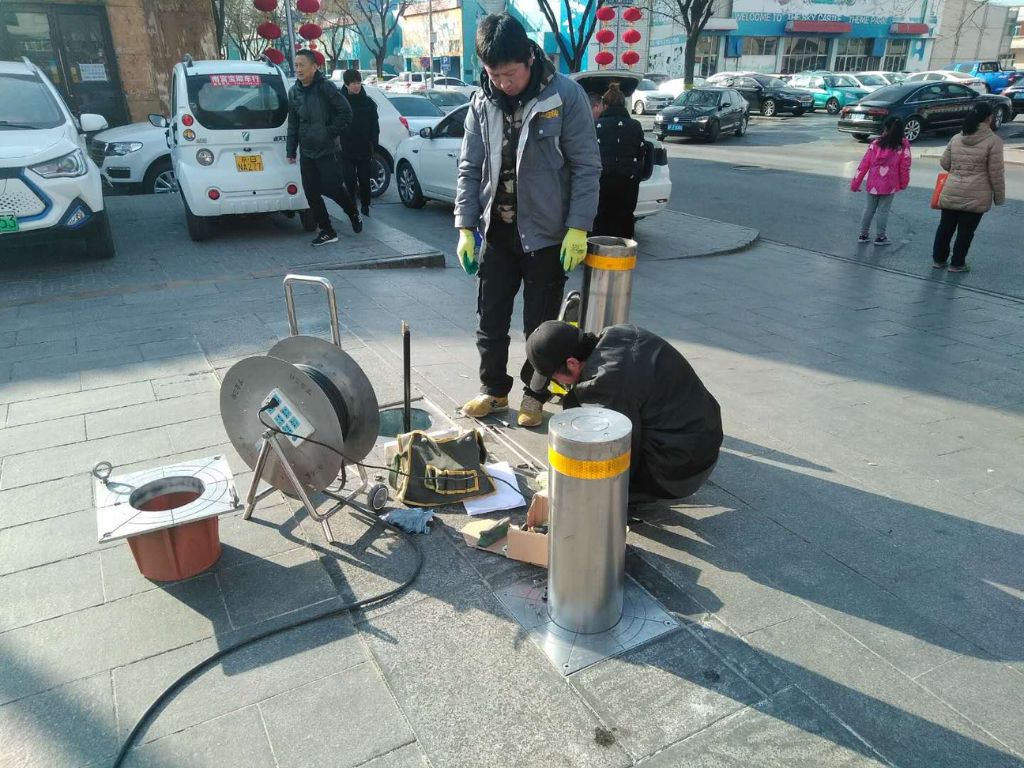
Motor Fails to Operate
Cause: The motor may fail to start due to power supply issues, tripped circuit breakers, or damage to the motor itself.
Solution:
-
Check the power supply to ensure stable voltage.
-
Inspect the circuit breaker to see if it has tripped; reset or replace if necessary.
-
If the motor is damaged, it may need repair or replacement.
Control System Malfunction
Cause: A fault in the bollard's control system could be due to a damaged controller, faulty sensors, or wiring issues.
Solution:
-
Inspect all components of the control system, including the controller and sensors, to identify faults.
-
Repair or replace any defective parts to restore the control system’s normal function.
Lighting Issues (Flickering or Not Working)
Cause: The bollard's lighting may not function or flicker due to a damaged light bulb, poor wiring connections, or issues with the circuit board.
Solution:
-
Replace damaged bulbs and check the connections between the light socket and wiring to ensure they are secure.
-
If the issue persists, inspect the circuit board and repair or replace it if necessary.
How to Prevent Automatic Bollard Failures?
To effectively prevent automatic bollard failures, it is recommended to implement regular maintenance measures, identify potential issues early, and resolve them promptly. Here are some effective preventive measures:
-
Regular Lubrication: Inspect and lubricate the bollard’s moving parts to ensure smooth operation.
-
Clear Debris: Regularly remove debris around the bollard to prevent any obstructions to its movement.
-
Inspect Electrical Circuit: Periodically check the electrical system to ensure the power supply, wiring connections, and electrical components are in good condition.
-
Replace Worn Parts: Replace aging or worn-out components in a timely manner to avoid potential failures.
By following these preventive measures, you can significantly reduce the occurrence of bollard failures and ensure long-term stable operation.
Conclusion
Automatic bollards play a critical role in modern traffic management systems, but as usage increases, malfunctions are inevitable. Regular inspection and prompt troubleshooting can help ensure the bollard’s proper function and extend its service life. If your automatic bollard malfunctions, refer to the troubleshooting solutions provided in this article to quickly diagnose and resolve the issue.
